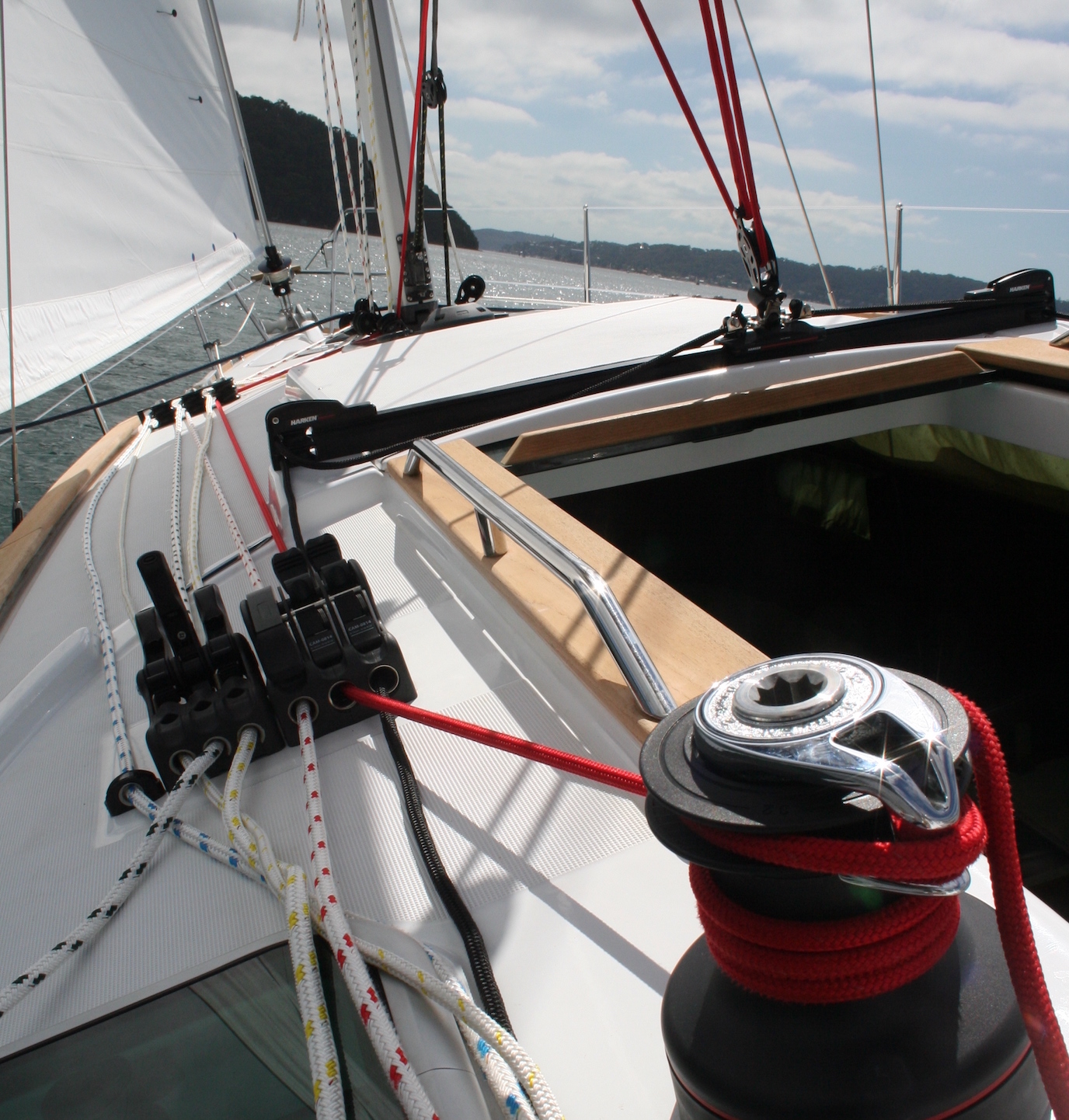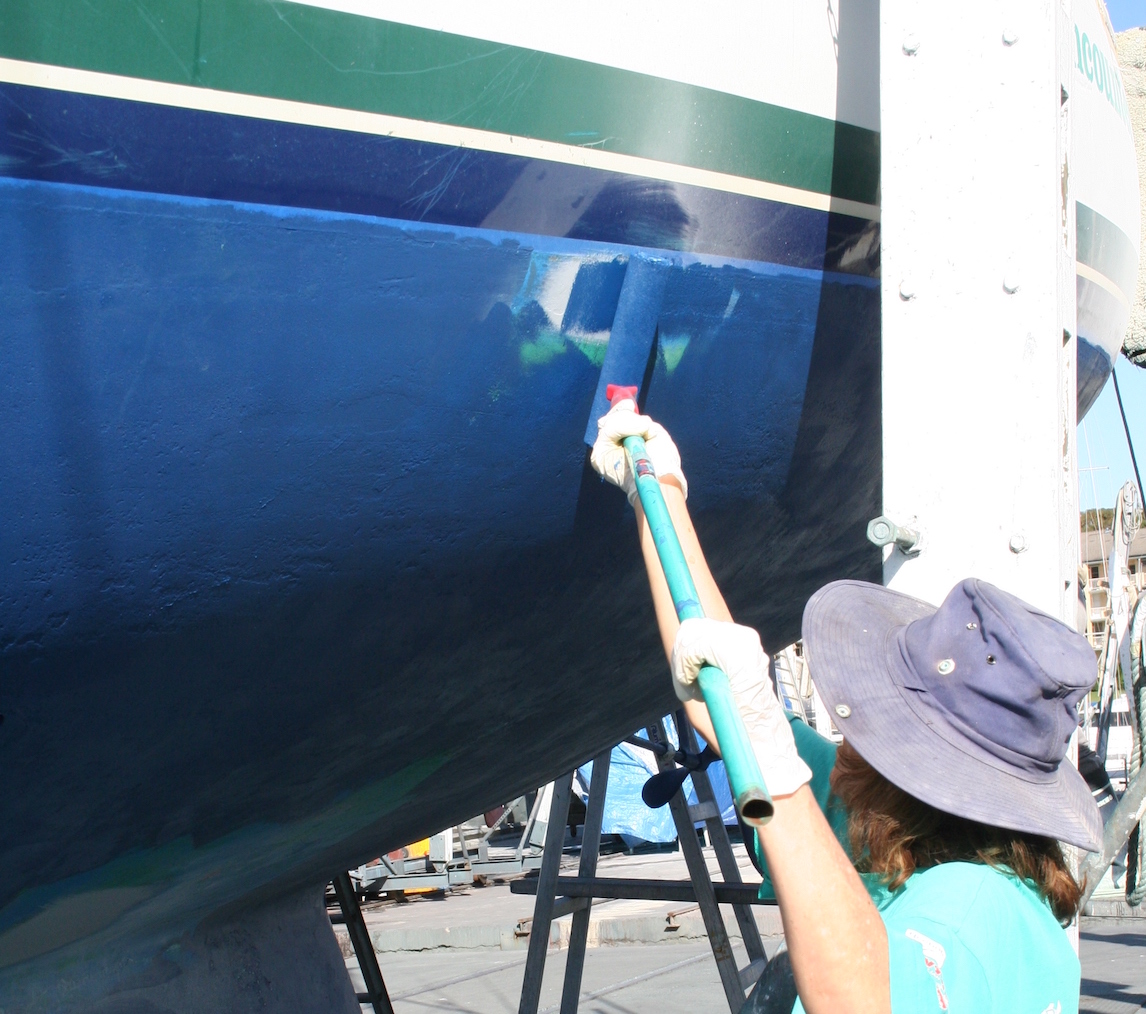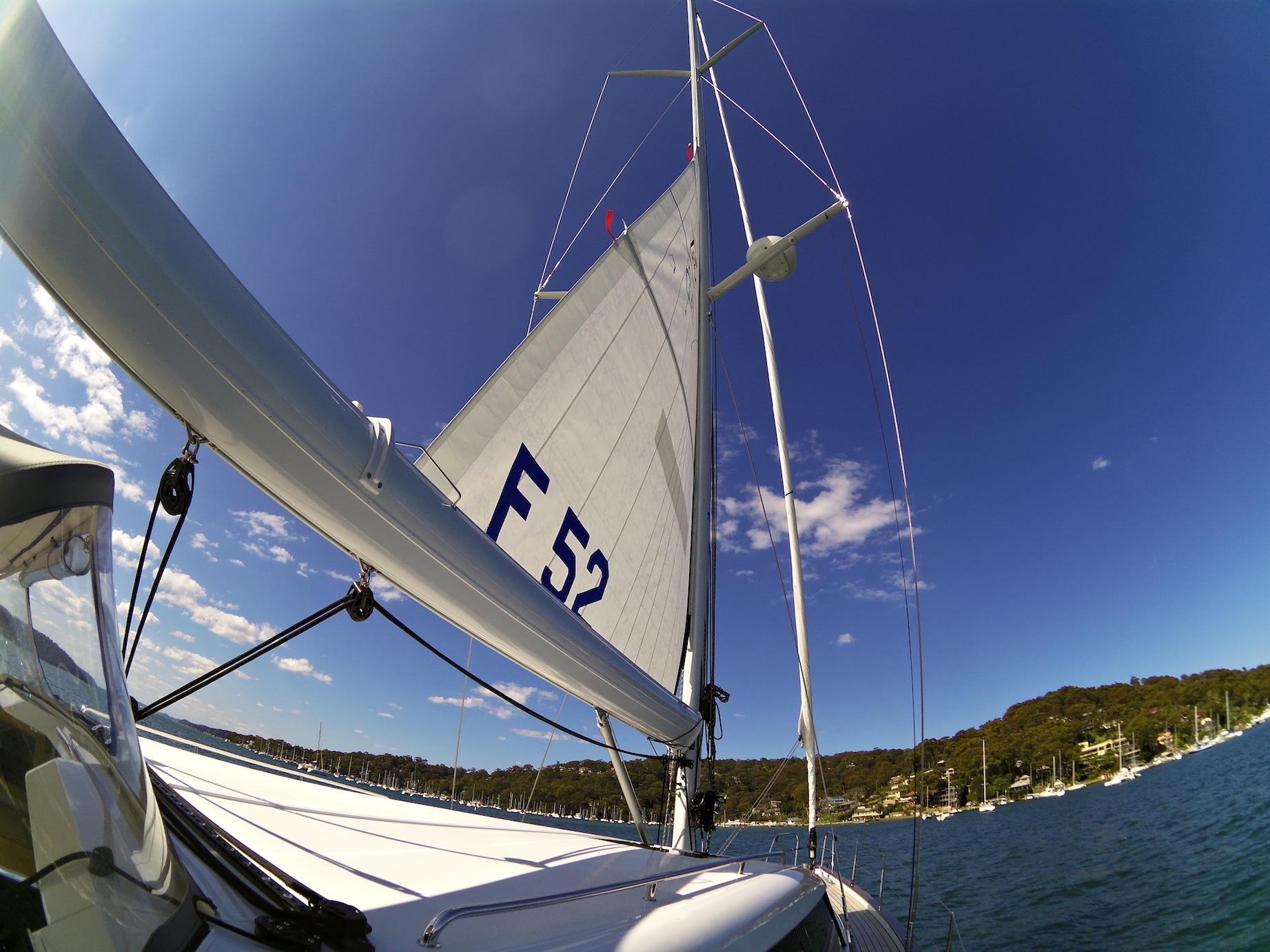Rust never sleeps
Yachts are our usually our biggest investment after
our home, says Kevin Green. Regular maintenance – especially ahead of the traditionally busier and warmer sailing season – is both necessary and prudent.
Written by Kevin Green
08 October 2018
Advertisement
As a European, what I particularly notice about boats in Australia – both my own and the many others around my anchorage on Sydney Harbour – is the damage they endure from the harsh ultraviolet (UV) radiation from the sun.
High temperatures can also cause stress in almost every part of the boat – from flaking fibreglass on the deck to the teak toe rails and everything in between. Running rigging and cordage can take a hammering too.
Another enemy of boaters is the moisture and general humidity that can insidiously creep into the wiring, headliners and even diesel tanks. Meanwhile the hull, another big-ticket item, can become an island paradise for marine organisms of many kinds.
And so, the diligent boater has plenty to do in terms of maintenance before the spring season well and truly gets under way. It all brings to mind the classic Neil Young album, Rust Never Sleeps.
Advertisement
Above and beyond
With literally tons of pressure on it, the rig is the most stressed part of the boat. This is one reason why your insurance company usually insists on a ten-yearly change of the standing rigging and a general inspection.
In between times, it’s wise to watch for common problems such as loose wire strands, cracked bottle screws and general corrosion. Key stress points are around chain plates, masthead fittings and the gooseneck, which can often develop play with age and may require packing-out with washers.
Rig tension can change over time too, so tuning is wise. Best to ask a professional rigger to call by before the season starts. Roller furlers are another key point that often become sticky after their winter idle and require a spray of dry silicone lubricant and an unfurl at a minimum.
Phil Yeomans from DeckHardware advises, “Furling lines, along with all other lines, should be cleaned. Ideally all sheets should be washed in lukewarm water with a pH-neutral soap. Mousing halyards when not in use (to combat UV) is also a smart move.”
Cleaning the mast itself and degreasing luff tubes on cruiser–racers is also important. “Some other areas to be mindful of are halyard abrasion points on blocks, damaged splicing and exposed parts of cordage that’s indicated by discolouration. They should all be replaced. And clean all blocks with just hot water,” adds Yeomans.
The sail wardrobe is the next biggie. For general cruisers, it’s chafe, burst stitching and sun strips on furling genoas. Unsightly rust marks can sometimes be removed (carefully) with oxalic acid. Or sprinkle with some lemon juice and leave in the sun.
Sailmakers generally recommend double stitching tiring parts of old sails in places such as reefing points, tacks, heads and clews. The light nylon on cruising chutes should be carefully looked over as one cut stitch will spell its end when pressurised.
Time for introspection
Corrosive, salt-laden air and electrical systems are the yachtsman’s worst enemy in every part of the boat, including inaccessible places like the masthead tricolour. Some owners take the view that if it isn’t broke, don’t fix it, which is understandable, but flawed.
If it goes wrong, it often does at the very worst time – such as the night the autopilot went while sailing the inner Great Barrier Reef, which gave me a major scare. For good reason, I try and keep these scenarios in mind when tempted to take shortcuts with maintenance.
Corroded wiring also increases the circuit’s resistance, which puts greater loads on batteries that can often deteriorate between sailing seasons. Batteries have their own requirements, so when you replace your old, wet acid battery with a more efficient gel model, remember that gel ones require good ventilation (and shouldn’t be jammed tightly into a plastic box).
Marine electrician David Rodgers sees a lot of old boats with tired wiring, many of which are simply dangerous. He advises, “Boat wiring should be done by experienced marine electricians, not car electricians.”
No current marine electrical qualifications exist in Australia, but all electricians should abide by the AS/NZS 3000 standards. To avoid potential problems, ensure your tradesperson has experience in marine installations, which includes key issues such as earthing, shore power and ad-hoc device installs. (For instance, AC and DC grounding are two separate systems – a scenario that shore-based electricians may not be fully aware of.)
The old type of solid, core copper (instead of multicore) is another hazard. So too is after-market flammable plastic conduit and painted wiring (solvents can destroy the insulation). All of this can be very dangerous and is not to be underestimated, especially when you consider all the other hazards aboard including fuel, and probably most dangerously, gas. (Gas from the LPG cooker or hydrogen from the battery can sink to the bilges through cracked bulkheads to await that overheating wire that was cut, but not removed.)
“Other major issues include electrolysis and dealing with mast wiring – masts are just like lightning rods!” says Rodgers.
Smarts – the myriad of instruments that the modern yacht bristles with – are yet another chore. Olectric boss Guy Oliver maintains electronics on everything from top supermaxis to everyday cruising boats and says, “Some of the basic advice we give is to recalibrate your systems at the start of each season.
“Watch out for corrosion and moisture in switchboards and other sensitive electrical places too,” says Oliver.
He adds, “Key areas to check are autopilot connections and linkages to steering gear. Don’t forget to load test batteries and check old wiring; they should be replaced every 15–20 years.”
Engines 101
Engines are usually the largest source of bother and their failure is the most common reason why sailing yachts put out distress calls.
Case in point: motor sailing down the coast in March, we neared Sydney’s North Head in fading wind. I diligently made some offing for my final approach into the harbour, which was just as well because as the breeze died, so did our engine. The reason for the problem was dirty fuel – I’d just filled up at Pittwater, which had stirred up muck and moisture from the bottom of the stainless tank.
Luckily the zephyr of breeze filled in so we avoided becoming a rescue statistic. The following week I drained the tank, replaced the worn fuel/water separator filter and ran clean fuel through the entire system.
For those who are time poor, it’s best to call in a specialist like Sydney Diesel Marine. Head Phil Lulic says, “We encourage boat owners to be on board when we service their engines so we can give them a tutorial on what to look out for between servicing.”
He also advises paying particular attention to the obvious basics such as correct fluid levels in coolants and crankcase and gearbox oil levels. Another critical part is engine coolant flow: “If the water flow is less than usual, the engine exhaust note will change,” notes Lulic.
And his final piece of advice? “Keep closed bilges under the engine dry and clean; a clean bilge will make it easier to notice if any fluids are leaking.”
What lies beneath
Fibreglass hulls are incredibly robust, which is why they are often neglected by owners. However, the older the boat, the more metal fatigue there is in keel bolts, bronze seacocks and other external fittings. Failed steering gear is another biggie when it comes to distress calls, so checking the rudder shaft for play as well as the attachments is a critical job.
Electrolysis is an invisible killer. It’s quite common in busy marinas where there’s a lot of radio activity, so if you notice paint peeling on the hull or any shiny metal, ask a marine electrician to check for any invasive electrical fields.
Likewise, worn sacrificial anodes can be identified by the diver you hire for that bottom scrub, or buy one of these new marine cameras and check them out for yourself.
Antifouling is a big chore and usually your largest cost for the boat annually, so it is worth giving it some thought. It’s a vast subject, and the details are beyond the scope of this article, but the basic deciding factors in your choice of paint include the boat’s location and desired performance.
Quite simply, boats located above the Tropic of Capricorn will require a different paint to those moored in the more temperate waters around Sydney and Melbourne. There are several types of paint, but the two main ones are hard and soft – the latter wears away to continually renew itself, while the former is favoured by racing boats whose owners can polish it regularly.
Paints now go beyond the basic copper-based paints to include silicon and polymer types. A new owner may not know what is already on his boat so should consult a specialist to avoid mistakes like applying a hard antifoul on top of a soft one, which simply won’t work. Other no-nos include using copper-based paint on alloys and other metals and, of course, matching the paint to the hull material.
Major companies like AkzoNobel have impressively informative websites that can guide buyers toward the correct paint for their particular boat. Company spokesperson for AkzoNobel Laura Flannery says, “It’s really important when hauling out to re-antifoul. This removes the top layer of old antifouling. Often called the leached layer, it’s the layer of paint that is depleted in biocide and some resin, and what makes it an unstable, dead film.”
A popular general-purpose ablative for cruising boats in southeast Australia is International Awlcraft Antifouling, a high-strength, cuprous oxide-based soft paint. It’s quick drying and can be used on fibreglass, wood and primed underwater metals, but not aluminium. Another option is self-polishing paints that maintain a smooth surface as the soft paint wears. Products include International’s Micron Extra 2.
Once all that is done, there’s only one thing left to do: go for a sea trial in preparation for those balmy summer days ahead.
Advertisement
Advertisement
Advertisement







